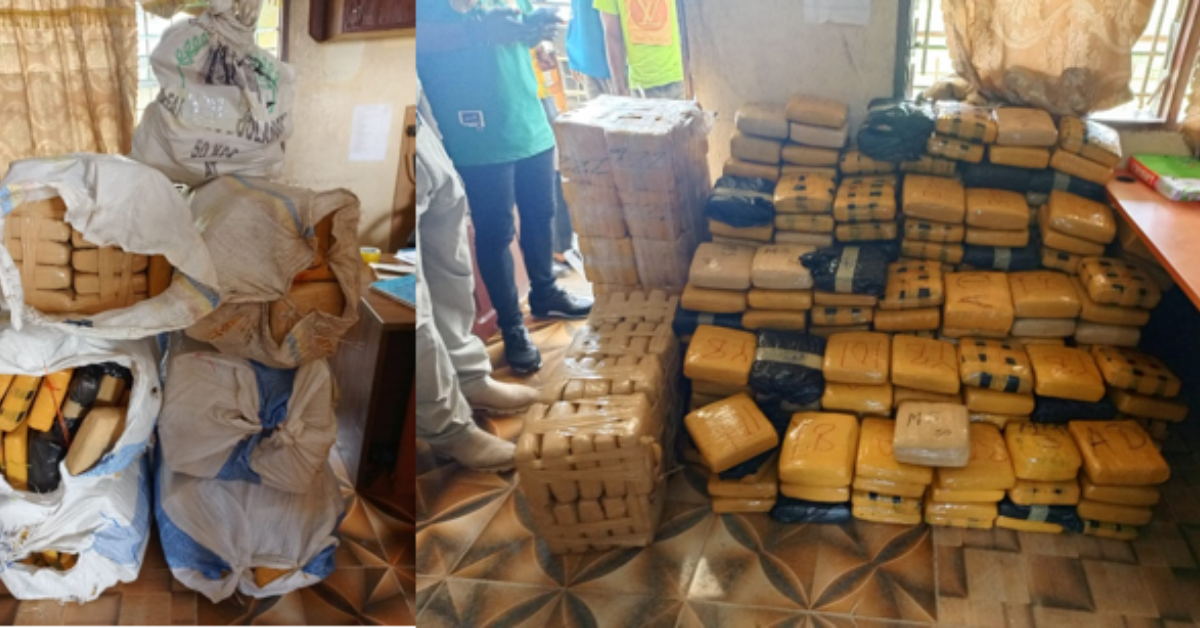The Liberia Drugs Enforcement Agency (LDEA) has confiscated a minibus at the Liberia-Sierra Leone border in Bo Waterside, Grand Cape Mount County, during a routine search. The bus, packed with a significant quantity of marijuana, was intercepted by LDEA agents, though the driver remains at large.
Liberia is not a major producer of illicit narcotics; however, the use of marijuana is widespread. Other substances, such as heroin (primarily smoked) and cocaine (often snorted), are also common, with authorities reporting an increase in amphetamine-type stimulants and intravenous drugs.
The arrest of the minibus loaded with drugs has raised concerns about the increasing inflow of narcotics into Liberia through the Sierra Leone border, a known route for drug trafficking. The country’s drug epidemic has severely impacted the youth, many of whom have fallen victim to substance abuse, becoming part of a vulnerable population commonly referred to as “Zogos.”
Bo Waterside is one of several illicit drug entry points in Liberia. Marijuana is the most commonly used substance, although the consumption of heroin and crack cocaine is also on the rise, with a notable increase in heroin use.
The arrest of the minibus loaded with drugs has raised concerns about the increasing inflow of narcotics into Liberia through the Sierra Leone border, a known route for drug trafficking. The country’s drug epidemic has severely impacted the youth, many of whom have fallen victim to substance abuse, becoming part of a vulnerable population commonly referred to as “Zogos.”
According to the LDEA, the minibus, bearing license plate AG 1253, was found to contain 400 compressed plates of marijuana during a security check at the Bo Waterside port of entry. The driver fled the scene upon the discovery of the drugs and is currently being sought by law enforcement.
The minibus has been impounded, and LDEA intelligence units are conducting a search for the fugitive driver. Authorities have intensified their efforts to curtail the growing drug problem, which has plagued Liberia in recent years.
Liberia’s ongoing drug crisis, exacerbated by the low cost and availability of narcotics such as kush—sold for as little as LD$100 per pack—continues to threaten the country’s youth.
According to the Ministry of Youth and Sports, factors contributing to the increase in “At-Risk Youth” include peer pressure, poverty, abuse, weak family support systems, and intergenerational drug use. Many of today’s drug addicts are the children of former child soldiers, who were introduced to drugs at a young age.
Drug abuse is an escalating problem in Liberia. While there is no reliable data on the number of users, a study by the United Nations Population Fund Liberia revealed that a staggering one in five Liberian youth use narcotics.
The U.N. Office on Drugs and Crime’s 2023 report identifies Africa as a key transit route for cocaine, heroin, and marijuana from South America to Europe. In the Sahel region—covering parts of western and north-central Africa—the amount of cocaine seized spiked dramatically, rising from 13 kg per year in 2020 to 863 kg in 2022.
President Boakai, during his campaign for the presidency, promised to combat drug abuse. Shortly after his inauguration, he took decisive steps by undergoing a drug test alongside Vice President Jeremiah Koung and establishing a special taskforce on drugs.
However, he has faced criticism recently for not following through on these efforts. The taskforce has not reported any significant activities or achievements for months, and, to make matters worse, its budget was slashed by over US$1 million.


 Post a comment
Post a comment 









